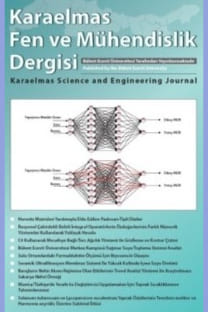Effect of Feeding Habits of Cows on Trace Element Contents of Some Dairy Products
Effect of Feeding Habits of Cows on Trace Element Contents of Some Dairy Products
Concentrations of selenium, copper, nickel, zinc, cadmium and lead contents of several typical Turkish dairy products were determined using Inductively Coupled Plasma -Optical Emission Spectrometry ICP-OES . The order of the elements in the dairy products was determined to be Zn > Se >Ni >Pb > Cu > Cd. Additionally, the concentration ranges in these samples were found to be 0.003-79.7, 4.32-59.8, 0.1-31.53, 0.58-30.9, 0.22-9.89 and 0.008-1.89 mg 100g –1, respectively.In determination of the selenium content in selected dairy product, the highest values were found in the milk and white cheese, but lower values are observed in yogurt. In addition, the results show two kinds of dairy products milk and white cheese have as foods with high levels of nutritionally important trace elements such as Se and Zn. The results identify composition of these dairy products were within safety baseline levels for human consumption. Results obtained from this study also provided important information on safety and quality standards of local milk and milk products; cheese and yoghurts.
___
- Belewu, MA., Aiyegbusi, OF. 2002. Comparison of the mineral content and apparent biological value of milk from human, cow and goat. J. Food Technol. Afr., 7: 9–11.
- Coni, E., Bocca, B., Caroli, S. 1999. Minor and trace element content of two typical Italian sheep dairy products. J. Dairy Res., 66: 589–598.
- Demirezen, D., Aksoy, A. 2004. Accumulation of heavy metals in Typha angustifolia (L.) and Potamogeton pectinatus (L) living in Sultan Marsh (Kayseri, Turkey), Chemosphere, 56: 685-696.
- Demirezen, D., Aksoy, A. 2006. Heavy Metal Levels in Vegetables in Turkey are within Safe Limits for Cu, Zn, Ni and Exceeded for Cd and Pb. Journal of Food Quality, 29: 252- 265.
- Dietary Reference Intakes (Dri) and Recommended Dietary Allowances (Rda). 2002. From the US Department of Agriculture’s Food and Nutrition Information Center.
- El Zubeir, IEM., Wigdan, M., Abdalla El Owni, OAO. 2005. Chemical composition of fermented milk (roub and mish) in Sudan. Food Control., 16(7): 633-637.
- El-Mardi, MA. 1988. A study on fermented milk ‘‘Roub’’. M. Sc.Thesis, University of Khartoum.
- FIL/IDF (1990). Bulletin No 50A.
- Franco, I., Prieto, B., Bernardo, A., Prieto, JG., Carballo, J. 2003. Biochemical changes throughout the ripening of a traditional Spanish goat cheese variety (Babia-Laciana). Int. Dairy J., 13: 221–230.
- Gambelli, L., Belloni, P., Ingrao, G., Pizzoferrato, L., Santaroni, GP. 1999. Minerals and Trace elements in Some Italian Dairy Products. J.of Food Consomp. and Analys., 12: 27-35.
- amounts in the diet (Park 1988, Rincon et al. 1994, Rodri
- guez et al. 1999, Pedro et al. 2006). A direct correlation
- Shen, L.H., Robberecht, H., Van Dael, P., Amaro, M. 1995. Estimation of the bioavailability of zinc and calcium from human, cows, goat and sheep milk by an in vitro method. Biol. Trace Elem. Res., 49: 107–117.
- Smrkolj, S., Pograjc, L., Hlastan-Ribi, C., Stibilj, V. 2005. Selenium content in selected Slovenian foodstuffs and estimated daily intakes of selenium. Food Chemistry, 90: 691- 697.
- Stoepper, M. 1984. In: Merian E. Editor. Metalle in der Umwelt. II, 7375.
- Suhaj, M., Korenˇovska, M. 2008. Correlation and distribution of elemental markers of origin in the production of Bryndza sheep cheese. Food Chemistry, 107: 551–557.
- TMARA (Turkish Ministry of Agriculture and Rural Affairs) (2002). A paper that related to export, import, sale and using of feed and production of additive and premix. 1734, Official Paper. Turkey.
- World Health Organisation (1982). Evaluation of certain food additives and contaminants. Technical Report Series, Number 683 (Geneva: World Heath Organisation), WHO.
- World Health Organisation (1993). Evaluation of certain food additives and contaminants. Technical Report Series, Number 837 (Geneva: World Heath Organization), WHO.
- World Health Organisation, Evaluation of certain food additives and contaminants (1989). Thirty- third Report of the Joint FAO / WHO Expert Committee on Food Additives. WHO Technical Report Series, No 776 (Geneva: World Heath Organisation), WHO.
- Rodriguez, E.M.R., Uretra, ED., Romero, CD. 1999. Concentrations of cadmium and lead in different types of milk. Z. Lebensm. Unters. Forsch., 208: 162–168.
- Shen, L.H., Robberecht, H., Van Dael, P., Amaro, M. 1995. Estimation of the bioavailability of zinc and calcium from human, cows, goat and sheep milk by an in vitro method. Biol. Trace Elem. Res., 49: 107–117.
- Smrkolj, S., Pograjc, L., Hlastan-Ribi, C., Stibilj, V. 2005. Selenium content in selected Slovenian foodstuffs and estimated daily intakes of selenium. Food Chemistry, 90: 691- 697.
- Stoepper, M. 1984. In: Merian E. Editor. Metalle in der Umwelt. II, 7375.
- Suhaj, M., Korenˇovska, M. 2008. Correlation and distribution of elemental markers of origin in the production of Bryndza sheep cheese. Food Chemistry, 107: 551–557.
- TMARA (Turkish Ministry of Agriculture and Rural Affairs) (2002). A paper that related to export, import, sale and using of feed and production of additive and premix. 1734, Official Paper. Turkey.
- World Health Organisation (1982). Evaluation of certain food additives and contaminants. Technical Report Series, Number 683 (Geneva: World Heath Organisation), WHO.
- World Health Organisation (1993). Evaluation of certain food additives and contaminants. Technical Report Series, Number 837 (Geneva: World Heath Organization), WHO.
- World Health Organisation, Evaluation of certain food additives and contaminants (1989). Thirty- third Report of the Joint FAO / WHO Expert Committee on Food Additives. WHO Technical Report Series, No 776 (Geneva: World Heath Organisation), WHO.
- ISSN: 2146-4987
- Yayın Aralığı: Yılda 2 Sayı
- Başlangıç: 2011
- Yayıncı: ZONGULDAK BÜLENT ECEVİT ÜNİVERSİTESİ
